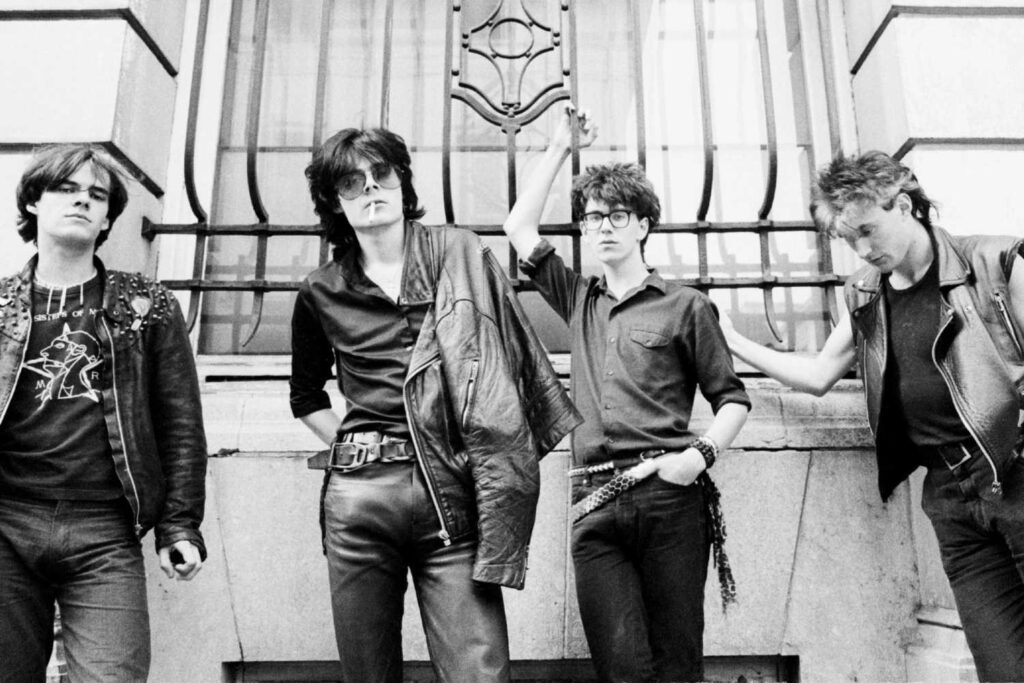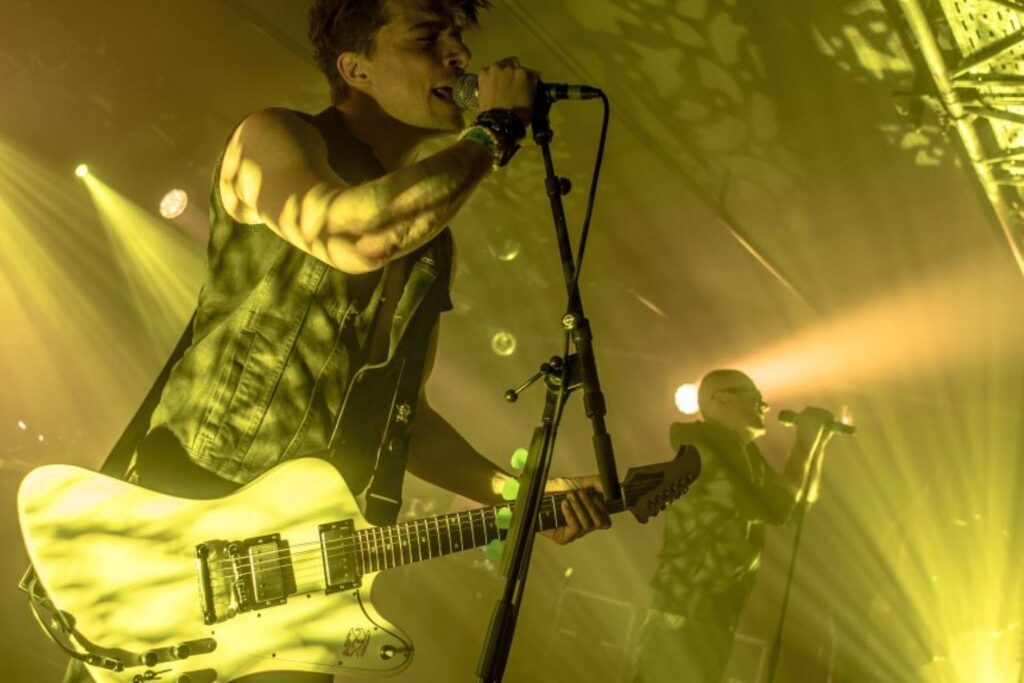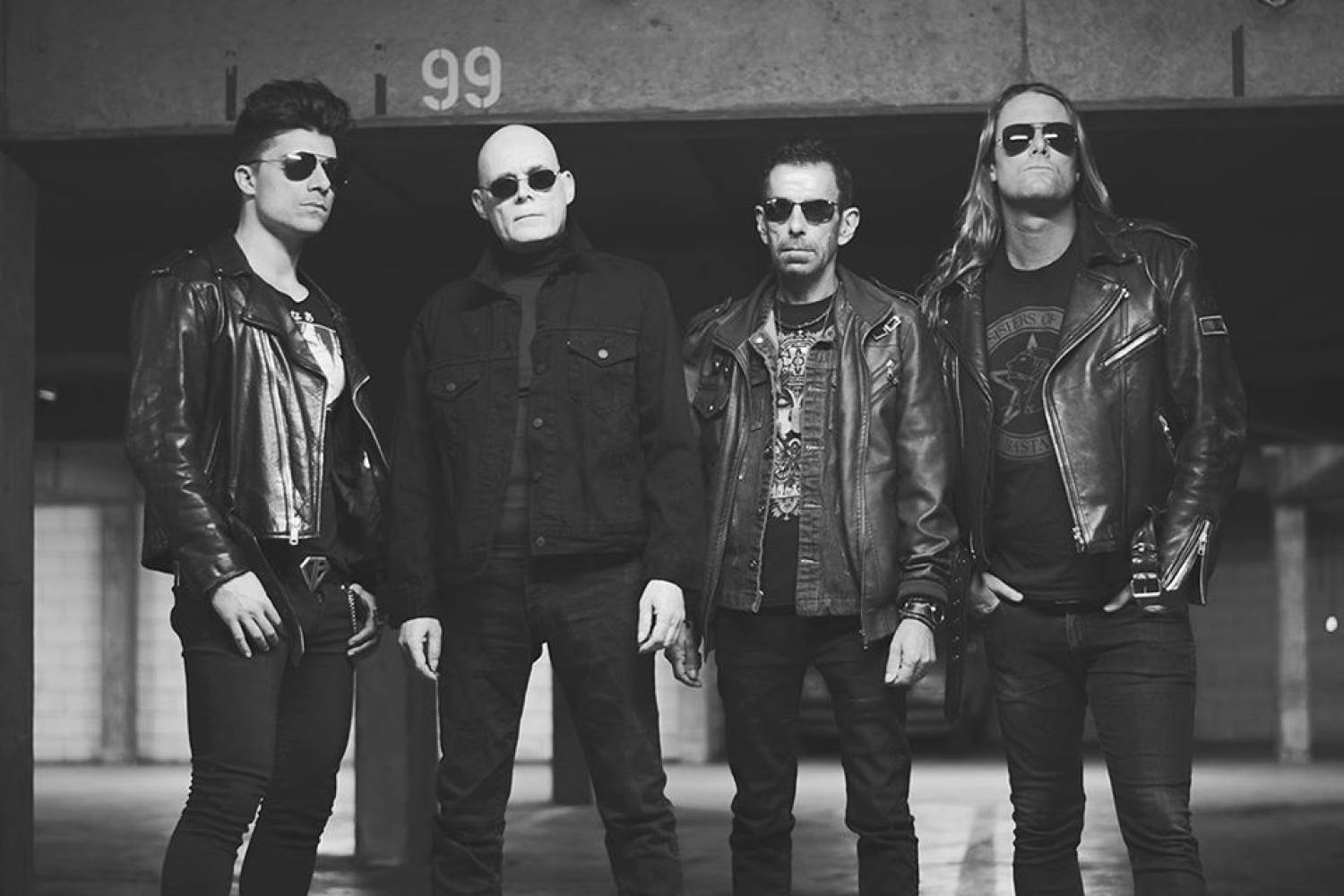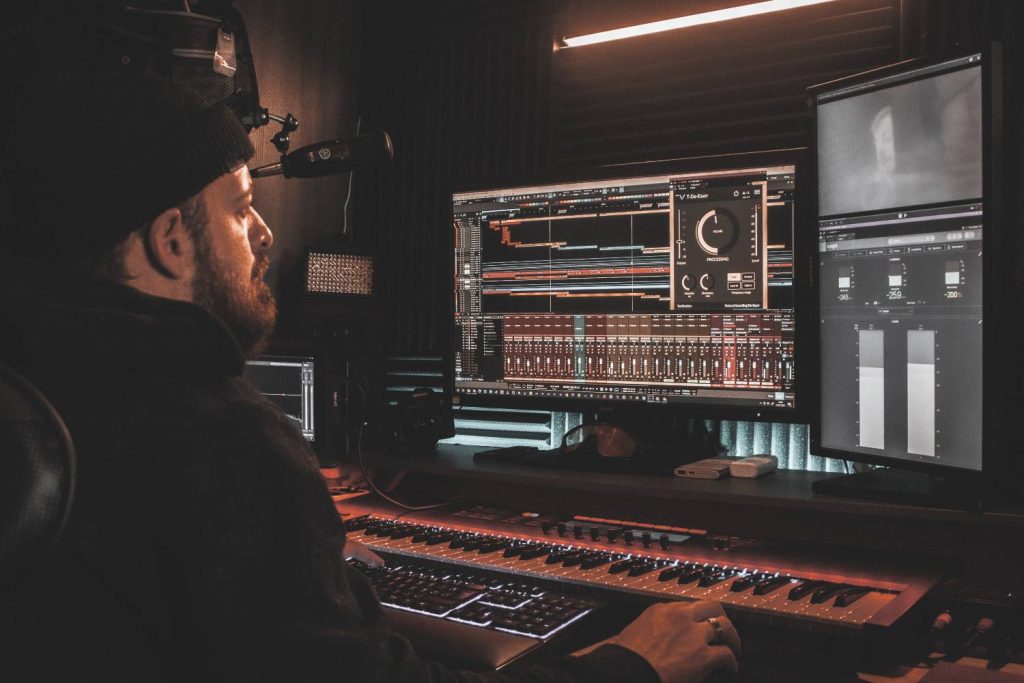The Sisters of Mercy defined a generation of goth, industrial and new wave music, despite only producing recordings for about a decade.
The Sisters of Mercy have had nothing short of a tumultuous history as a band. Formed in the early 80s, they’ve gone through multiple lineup changes, as well as spats with record labels due to “incompetence and withholding royalties”, forcing them to stop recording and releasing music in the early 90s. They’ve continued as a touring outfit, though perform new songs live from time to time.
Read up on all the latest features and columns here.
Frontman Andrew Eldritch has been the only consistent member, originally starting on drums before moving to vocals, the drums replaced with a drum machine they named Doktor Avalanche, which has been the moniker of every drum machine used to the present day. It’s difficult to list everyone’s gear specifically, but let’s dive into some key pieces.

No name 3-watt practice amp
Used on the guitar and bass on the Sister’s first single, when Eldritch was still playing drums.
Simple controls, and the look of a 50s-60s design.

Gary Marx
Gibson L6-S
Gary Marx was a mainstay of The Sisters of Mercy during their tenure as a recording act. His Gibson L6-S borrows heavily from the Les Paul design, though offering 24 frets and was a collaboration between Gibson and Bill Lawrence. It features two super-humbucking pickups, and a “multi-sound system” switcher that offering different voices in addition to the standard pickup switching.
Ravey Davey
Ravey Davey, a.k.a. Dave Creffield, has been Doktor Avalanche’s “full-time nurse” since he toured with The Sisters of Mercy for the first time in 1996 and has been around for multiple iterations of the Doktor since then. He controls additional parts of the Sisters’ live sets, as well as performing backing vocals from time to time.
Boss DR55 “Doktor Rhythm”
The first iteration of Doktor Rhythm was Boss’s DR55 “Doktor Rhythm”, from which Doktor Avalanche got its name.
The DR55 was the first in Boss’s hugely successful Dr.Rhythm range. It had four sounds available, augmented with reverb in the Sisters’ case, and enough memory to store a mere six 16-step patterns and an additional two 12-step patterns. Take special note of the single (and therefore mono) output.
Oberheim DMX
Funding from a record label after the success of the first recordings, the Sisters upgraded to an Oberheim DMX drum machine. Introduced in 1980, it was on market for approximately $15,000 AUD with today’s conversion, the DMX can be heard all across The Sisters of Mercy’s first album First and Last and Always.
In addition to more options for sounds, the DMX also had early stages of “humanization” available, with rolls, flams, and timing variations available to reproduce the human-feel of a real drummer. Based on 11-samples, the DMX offered up to 24 different sounds, all via 8-bit processing. The DMX is also the now (in)famous sound of New Order’s “Blue Monday”, as well as inspiring DMX Krew, the late rapper DMX and Davy DMX.
Yamaha RX5 & AKAI S900
The mid 80s and, arguably, The Sisters’ height of fame led to their acquisition of a Yamaha RX5 & AKAI S900 that was featured on Floodland. In addition to flagship sounds, memory and control, the RX5 also featured “Attack” and “Decay” controls for the envelope of the sounds you’d selected. In addition to great sounding drum samples, the RX5 also had gunshots and door slams, as well as guitar and bass samples available. 24-built in sounds was cutting edge for the mid-80s, especially with space for an additional memory card that allowed for an additional 28 of your own sounds.
The RX5’s pitch envelope really elevated it, allowing you adjust “Bend Amount” and “Bend Rate”. This means the sound would bend up or down as it decays, producing increasingly ‘real’ sounding drums, similar to how a drum’s note might linger and bend as the skin return to position.
The Doktor is currently, as of a 2011 interview with Eldritch, a MacBook Pro running on Steinberg’s Cubase.
Patricia Morrison
Morrison joined The Sisters for a period after original members moved on and Andrew Eldritch reclaimed the name (after a brief stint as The Sisterhood, it’s a long story…) and Morrison was brought on board to play bass for The Sisters of Mercy.
Fender Jazz Bass
Most well known as a member of The Damned as well as The Sisters of Mercy, Morrison often used an (all black, of course), Fender Jazz Bass. Its deep tones made space for the punchy kick of Doktor Avalanche, its simple controls making it a workhorse bass.
The maple neck and pearl inlays date this bass around the 70s.
Ben Christo
Ben Christo joined The Sisters of Mercy in 2006 and has performed with them since. A longstanding live member, Christo is also known and famous for playing with bands Night By Night and Diamond Black.
Gibson Firebird & SG
Christo has performed with Gibsons, both an SG Standard and a Firebird. Christo’s differ in that his Firebird has full-sized humbuckers for a fuller, more weighty sound. The Firebird and Gibson SG both have thinner, albeit mahogany bodies that retain the sustain of thicker Les Pauls, but without being overtly loud or all encompassing.

Dylan Smith
Australian-born Dylan Smith served as guitarist for The Sisters of Mercy for the last few years but has since been fired or left the band. Up until September 2023, he performed live, often with a Gibson Firebird strung across his shoulder. The mini humbuckers offer the weight and grit of full size humbuckers, without being overbearing and shadowing the synths or bass line. Smith would swap between guitar and bass.
Keep reading about the Oberheim DMX here.







